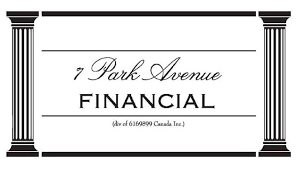|
Breaking the Cash Flow Barrier with Smart Inventory Financing
Modern Inventory Financing Solutions
YOUR COMPANY IS LOOKING FOR CANADIAN SMALL BUSINESS INVENTORY FINANCING
AND PURCHASE ORDER FINANCING!
You’ve arrived at the right address! Welcome to 7 Park Avenue Financial
Financing & Cash flow are the biggest issues facing business today
ARE YOU UNAWARE OR DISSATISFIED WITH YOUR CURRENT BUSINESS FINANCING OPTIONS?
CALL NOW – DIRECT LINE – 416 319 5769 – Let’s talk or arrange a meeting to discuss your needs
EMAIL – sprokop@7parkavenuefinancial.com

7 Park Avenue Financial originates business financing solutions for Canadian Businesses – We offer Inventory Financing and working capital solutions – Save time and focus on profits and business opportunities
7 Park Avenue Financial: “Canadian Business Financing with the intelligent use of experience”
INVENTORY FINANCE SOLUTIONS
Inventory Financing and Purchase Order in Canada
Introduction to Inventory Financing
In Canada, business inventory and purchase order financing is a much sought-after yet widely misunderstood aspect of business financing.
This type of financing, a subset of asset-based funding, is essential for retailers, manufacturers, and wholesalers across various Canadian business sectors.
BREAK FREE FROM THE INVENTORY CASH CRUNCH
Managing your inventory needs can severely affect working capital, so the ability to grow your business and fund day-to-day operations is vital. The appropriate level of inventory financing can help you preserve cash flow for business needs.
THREE UNCOMMON TAKES ON INVENTORY FINANCE
- Using inventory financing as a currency hedge during volatile exchange rates
- Leveraging seasonal inventory financing for reverse-season purchasing
- Combining inventory financing with vendor early payment discounts for profit optimization
DID YOU KNOW?
- 67% of Canadian SMEs cite working capital as their primary growth constraint
- Inventory financing typically offers 70-80% advance rates
- Average approval time: 5-7 business days
- 43% reduction in cash flow gaps reported by users
- 28% increase in bulk purchase savings opportunities
What is Inventory Financing?
Inventory financing is a type of business financing that allows companies to purchase inventory by using the inventory itself as collateral.
This financing solution is designed to help businesses manage their cash flow and meet their customers' demands. By leveraging inventory financing, businesses can purchase new or additional inventory without depleting their cash reserves.
This is particularly valuable for companies experiencing growing demand or seasonal fluctuations, as it ensures they have the necessary stock to fulfill customer orders.
The Need for Inventory Financing
Business owners and financial managers understand that maintaining inventory ties up valuable working capital and cash flow.
When internal resources or Canadian chartered bank financing fall short, it’s time to consider partnering with an independent commercial finance firm specializing in inventory financing.
Unlike traditional loans that require valuable business assets as collateral, inventory financing allows companies to leverage their inventory value without the need to pledge physical property or equipment. This type of financing is a subset of asset-based lending, which has gained popularity since the global economic crisis of 2008–2009 and subsequently, the COVID 10 Pandemic.
Inventory financing loans help businesses acquire more inventory to meet demand, especially during periods of growth.
These loans are typically short-term and secured by existing inventory, making them an attractive option for retailers and wholesalers facing fluctuations in sales. Companies can use an inventory financing loan to support their business operations and enhance liquidity.
Various types of inventory loans are available, including asset-based loans, which allow businesses to use their inventory as collateral to secure loans or lines of credit. This method highlights the importance of inventory assessments and the borrower’s financial performance in lending.
Costs and Fees Associated with Inventory Financing: The expenses incurred when companies borrow money to fund their inventory purchases are known as inventory financing costs. These costs include interest rates, origination fees, and penalties for late payments.
How to Make Inventory Financing Work
Purchasing inventory with financing involves several key steps.
First, a business must identify an inventory financing lender that offers the type of financing it needs. This could be a specialized inventory financing company or a commercial finance firm.
The next step is to apply for the loan, which requires providing financial information and other documentation as requested by the lender. Once the loan is approved, the business can use the funds to purchase the necessary inventory.
The purchased inventory serves as collateral for the loan, and the business must repay the loan according to the terms agreed upon with the lender. This process allows companies to maintain their cash flow while ensuring they have the inventory to meet customer demand.
Types of Inventory Loans
Several types of inventory loans are available to businesses, each with its own advantages.
One common type is a line of credit, which allows a business to borrow funds as needed and repay them when the inventory is sold. This provides flexibility and helps manage cash flow effectively.
Another type is a term loan, which provides a lump sum of money that must be repaid over a set period, offering predictability in repayment schedules.
Additionally, some lenders offer asset-based loans, which use the value of the inventory as collateral. These loans can be particularly beneficial for businesses with significant inventory assets, as they can secure larger financing.
Working with Specialized Inventory Financing Loans
To qualify for inventory financing, your inventory must be saleable. Working with inventory financing lenders that understand your industry and your inventory's value can be a tremendous asset. It’s crucial that the inventory lender properly secures the asset through a lien registration.
Balancing Bank Financing with Inventory Financing
Many clients have bank financing primarily covering receivables and a small portion of inventory. However, inventory financing and its counterpart, purchase order financing, must be separated and secured adequately within your overall financing strategy.
Utilizing existing inventory as collateral can be particularly advantageous, as lenders often prefer it over personal assets, mitigating risk for both parties involved. Some clients have seen significant increases in inventory margining — up to 50–80% — when using a dedicated inventory financing program.
The Value of Inventory as an Asset in Asset Based Financing
Inventory is a clear, identifiable, valuable asset in your financing strategy. Acquiring inventory can be challenging for business owners, especially new business owners, due to high costs. Banks often treat inventory as a way to strengthen overall security, but this approach can be insufficient for businesses focused on growth and customer fulfillment.
Costs and Fees Associated with Inventory Financing
Inventory financing can involve several costs and fees that businesses need to consider. Interest rates on inventory loans can vary depending on the lender and the type of loan, but they are typically higher than those on traditional business loans.
The lender charges origination fees for processing the loan application and setting up the loan, while prepayment fees may be incurred if the business repays the loan early. Understanding these costs is crucial for companies to manage their financing expenses effectively.
Businesses can find the most cost-effective solution for inventory financing by comparing different lenders and loan options.
Alternatives to Inventory Financing
While inventory financing can be a valuable tool for businesses, it may not be the best option for every company.
Some alternatives to inventory financing include invoice financing, bank loans, and revenue-based financing. Invoice financing involves using outstanding invoices as collateral for a loan, providing quick access to funds based on receivables.
Bank loans offer a lump sum of money that must be repaid over a set period, often with lower interest rates compared to inventory loans.
Revenue-based financing involves repaying a loan based on a percentage of the business’s revenue, aligning repayment with the business’s cash flow. Each of these alternatives has its own benefits and can be more suitable depending on the specific needs and financial situation of the business.
The Art and Science of Inventory Financing
Inventory financing is a blend of art and science. Understanding how inventory financing works is crucial; it involves regular monitoring — typically every month — to ensure the inventory can always satisfy loan repayment requirements.
For wholesalers and distributors, leveraging inventory adds cash flow and working capital to the overall financing strategy.
Understanding the Cash Conversion Cycle and Cash Flow
Once inventory ships, it becomes a receivable.
Both your firm and the inventory or purchase order lender must understand the cash conversion cycle — the time it takes for funds to move from purchase, to inventory, to receivable collection, and back to cash.
Inventory finance companies play a crucial role in this process by providing inventory financing loans to meet specific operational needs, thereby supporting business growth. Improvements in inventory and receivable turnover can significantly reduce borrowing costs.
Key Takeaways
-
Dynamic Collateral Assessment: Understanding how lenders value inventory as security transforms borrowing potential
-
Cash Flow Impact: Mastering how payment terms align with your sales cycle maximizes working capital efficiency
-
Seasonal Planning: Strategic timing of inventory purchases with financing cycles drives profitability
-
Credit Structure: Grasping how credit limits flex with inventory levels enables optimal fund utilization
-
Risk Management: Implementing proper inventory control systems ensures continued lender confidence
Conclusion: The Bottom Line on Inventory Financing
Smart inventory financing decisions can transform your business's cash flow constraints into a strategic advantage.
Inventory financing is a specialized form of finance.
If your business relies heavily on inventory, work with 7 Park Avenue Financial, a trusted, credible, experienced Canadian business financing advisor. Exploring inventory financing options can help you maximize and leverage what is likely your largest balance sheet asset without the need to leverage your personal or business assets.
FAQ
How does inventory financing improve cash flow flexibility?
-
Releases capital trapped in inventory
-
Creates predictable payment cycles
-
Enables bulk purchase discounts
-
Maintains operational cash reserves
-
Supports seasonal inventory needs
What makes inventory financing different from traditional loans?
-
Uses inventory as primary collateral
-
Offers flexible credit limits
-
Aligns with sales cycles
-
Requires minimal additional security
-
Provides faster approval processes
Can inventory financing help manage seasonal demands?
-
Enables off-season purchasing
-
Supports peak season preparation
-
Smooths cash flow fluctuations
-
Reduces storage pressures
-
Maximizes buying power
What documentation is required for inventory financing approval?
-
Current inventory lists and valuations
-
Recent financial statements
-
Accounts receivable/payable reports
-
Sales forecasts and history
-
Business tax returns
How quickly can inventory financing be arranged?
-
Initial approval within 5-7 business days
-
Documentation review: 2-3 days
-
Credit line setup: 1-2 days
-
Funding available: Often within 2 weeks
-
Ongoing draws: Usually next business day
How does inventory turnover affect financing terms?
-
Higher turnover rates typically secure better rates
-
Faster-moving inventory qualifies for larger advances
-
Regular turnover analysis influences credit limits
-
Seasonal variations are factored into terms
-
Performance metrics impact renewal conditions
What security measures do lenders require?
-
Regular inventory reporting systems
-
Physical inventory counts
-
Insurance coverage requirements
-
Stock monitoring procedures
-
Clear title to inventory
What is an inventory loan?
An inventory loan is a financial option that provides businesses with a lump sum to purchase inventory, which they must pay back with interest over a defined period. Understanding the terms, repayment processes, and the risks associated with fluctuating sales performance is crucial. A solid business plan is essential to ensure profitability and manage cash flow effectively when using inventory loans.

' Canadian Business Financing With The Intelligent Use Of Experience '
STAN PROKOP
7 Park Avenue Financial/Copyright/2025

Stan Prokop is the founder of 7 Park Avenue Financial and a recognized expert on Canadian Business Financing. Since 2004 Stan has helped hundreds of small, medium and large organizations achieve the financing they need to survive and grow. He has decades of credit and lending experience working for firms such as Hewlett Packard / Cable & Wireless / Ashland Oil
|